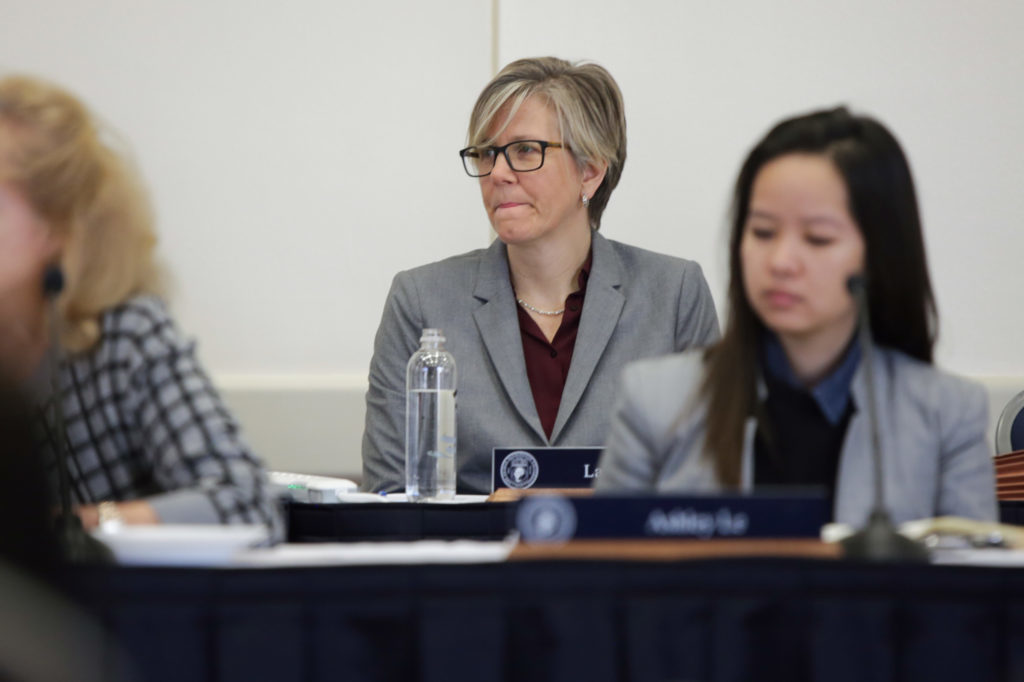A report released earlier this month states that student engagement is a better predictor of college outcomes than selectivity – a notion officials said they have been attuned to as they concentrate on promoting a better student experience.
Stanford University’s Graduate School of Education conducted a review of college outcomes, like student learning and job satisfaction, and correlated their relationship with factors like selectivity and rankings. Researchers determined that student engagement is more meaningful in promoting positive student outcomes than a school’s rank or admit rate.
At a time when GW has fallen in college rankings and increased its acceptance rate, higher education experts said officials may be prioritizing the diversity of its student body and overall student satisfaction over the number of students they admit – a move that could contribute to a more content student body in the long run.
The report states that rankings are “problematic,” college selectivity is not a “reliable predictor” of student learning, and engagement in college through student mentorships and internships is more important than the prestige of the school. Researchers reviewed literature about college outcomes to produce the findings, according to the report.
The report advises universities to focus on providing students with a good on-campus experience, which could be accomplished through internship opportunities, extracurricular activities and student mentors.
“This focus on selectivity may stem from misconceptions about college rankings and how college selectivity affects both what happens during the college years and life after graduation,” the report reads.
Laurie Koehler, the senior vice provost of enrollment and the student experience, said choosing whether to attend a particular school “has almost nothing to do” with its rankings in a particular year. Koehler said students are more likely to choose a college after visiting a school because “at its core, the college search process is truly about finding the best fit.”
She said officials are “committed to providing a holistic approach” to students’ on-campus experience by offering global programs and “hands-on” learning. Officials have prioritized the student experience by debuting the Office of Enrollment and the Student Experience in July, “where officials are working to create a positive and cohesive experience from the admissions process to graduation,” she said.
University President Thomas LeBlanc made the student experience a priority during his first year at GW, reshaping administrative roles and University departments to better engage students with officials.
“We are more focused on enrolling academically talented, hard-working, engaged and diverse students and creating a student-focused, positive college experience for our students,” she said in an email.
She said the University’s rising retention rate – which currently stands at about 93 percent, the highest in seven years – “suggests we are having success in doing both.”
Koehler added that rankings agencies like U.S. News and World Report “have come to realize” that the admit rate is a measure of how many applicants a school denies, not a measure of the quality of an institution or its student body. For its 2019 rankings, U.S. News did not consider admit rates in its calculations, though the figure was previously given a 1.25 percent weight.
Higher education experts said they agree with the study, saying that colleges that aim to maintain a high ranking and low selectivity tend to shy away from recruiting a more diverse student body.
Jay Halfond, a professor of the practice of continuing and distance education at Boston University, said rankings are “not meant to be an empirical analysis of institutional quality” but are often used as a guide to “help sell magazines.” By judging a college by its selectivity, he said schools are reiterating a “reputation for exclusivity, not quality.”
This year, GW dropped off the Princeton Review list of the top 10 most politically active campuses in America and fell seven slots to No. 63 in the U.S. News top colleges rankings. At the same time, the University climbed at least 19 spots in Times Higher Education’s rankings of the top 200 schools in the world.
“There is no set hierarchy of schools so much as a variety of institutions where prospective students need to find the best fit,” Halfond said in an email. “We need to promote this institutional diversity, not come up with a one-model-fits-all view of higher education.”
John Slaughter, a professor of engineering and education at the University of Southern California’s Rossier School of Education, said rankings tend to be “misleading” because they often do not correlate with the quality of education a student receives.
He added that at a school like GW, which has fallen in rankings and become less selective, officials could be focused on admitting a more diverse pool of applicants instead of the percentage of students they are accepting.
The University’s acceptance rate rose for the third consecutive year for the Class of 2022, which officials attributed to accepting students who might be more likely to attend and stay at GW, boosting the University’s six-year graduation rate.
The University should not worry about its drop in rankings or decreased selectivity as long as officials are working to connect students with engaging faculty all four years, Slaughter said.
“Institutions should be less concerned with that and more concerned with examining themselves to do the best possible job to give students a quality educational experience,” he said.
Kelly Hooper contributed reporting.





